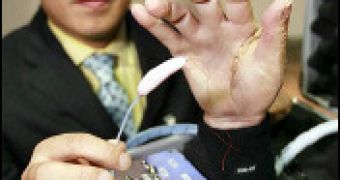When it comes to robots, so far, Japan rules. They're a few generations ahead of most competitors. Sony's AIBO was the first robot dog to recognize words and objects, and Honda's ASIMO is the first humanoid robot that can walk on two feet in a manner resembling human locomotion at up to 6 km/h (3.7 mph).
Again, a Japanese robot company presented a working prototype of an artificial hand that can flex using air muscles and can perform the most delicate tasks, like picking up a raw egg without dropping it or crushing it.
The 400-gram (14 ounce) hand developed by the Kyoto-based robot and factory automation manufacturer Squse is a replica of the human hand, having five human-sized fingers with artificial fibers that can be controlled by air pressure.
A demonstration performed by the company proved that the robotic hand can pick up delicate objects and handle them with care, like a raw egg that it picked up and moved around without breaking. This was made possible for the extremely fine tuned air muscles that may be key technology for developing new types of artificial hands in the future, as Hiroshi Yokoi, associate professor of precision engineering at the University of Tokyo, said.
"Compared to motor-driven ones, air muscle hands are extremely light and less noisy," Yokoi said, adding that they may be in practical use in about five years' time.
"So far, robots have an image of helping people do heavy lifting, but we aim at delicate work as a human hand can do," company president Mikio Shimizu said.
The manufacturing company has big plans for the new artificial hand and plans to deliver around 50 prototypes to research institutes and firms and in the near future they hope to be able to start shipping commercial applications overseas.

 14 DAY TRIAL //
14 DAY TRIAL //